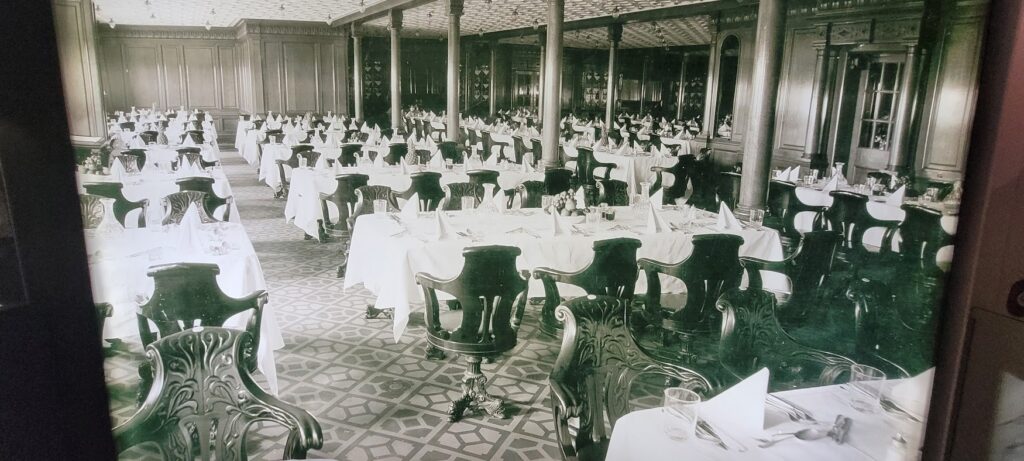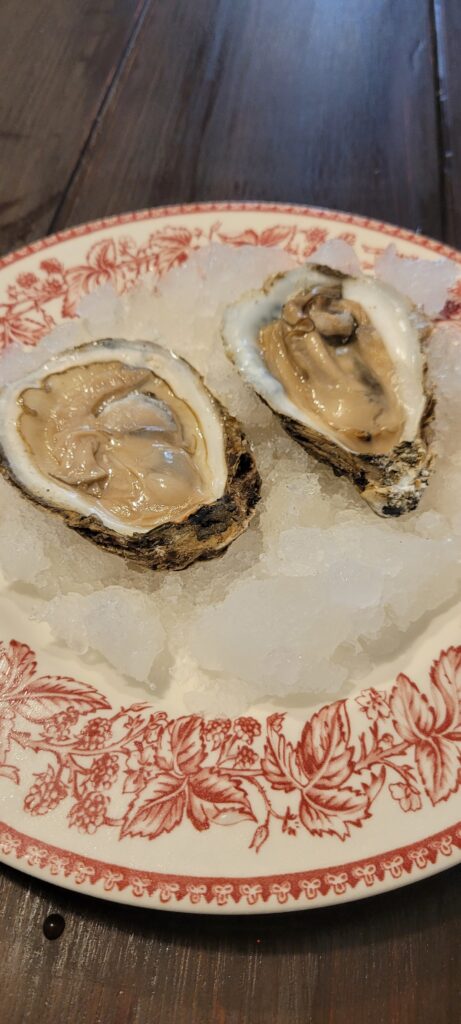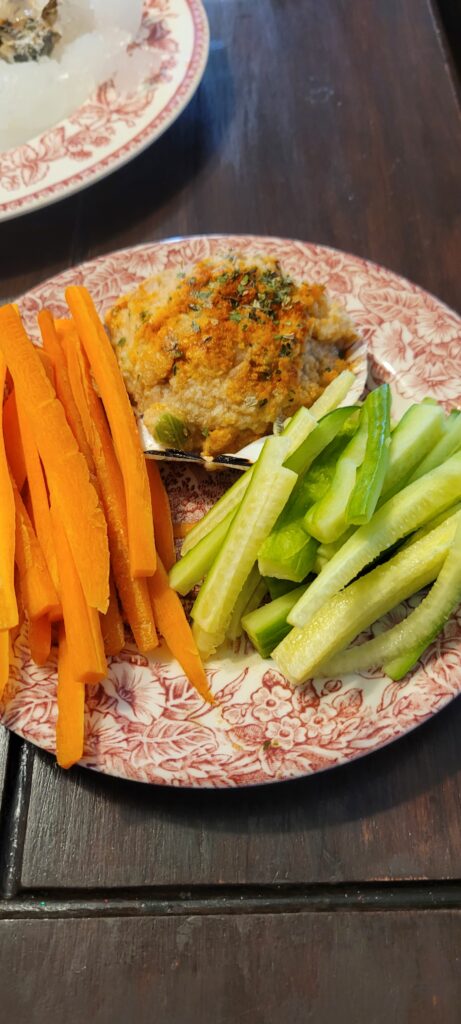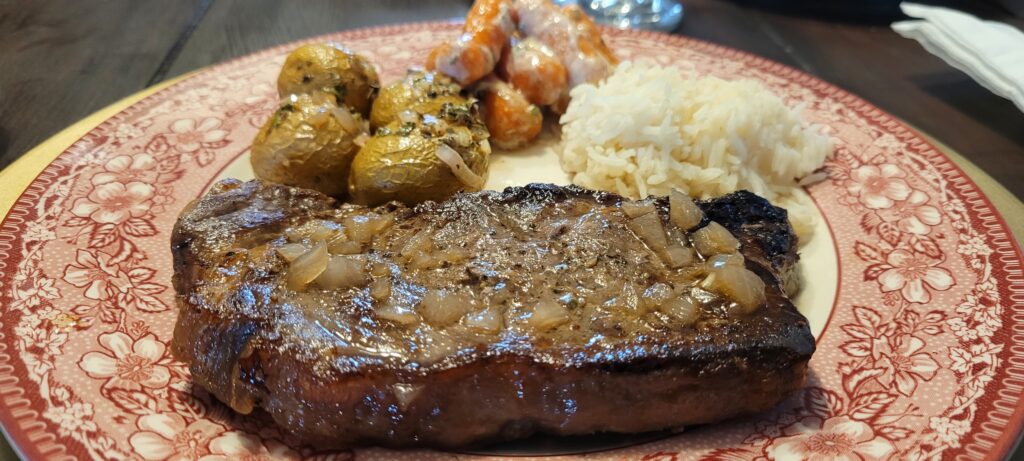For Christmas this year it was decided to revisit a historic. An excerpt of the first class menu from April 14th from the RMS Titanic seemed like a popular choice. The Titanic’s culinary journey for first class ticket prices reflected this privilege, averaging around $150 (equivalent to about $70,000 today). The menu for first-class passengers was predominantly French-inspired, with a touch of British classics.
After a couple hours of searching and reviewing recipes, I was able to find historically correct recipes to remake some of the offerings that were served that day. I am not well versed in the art of French cuisine so of course the obvious answer is to do the 2trial run on Christmas day. If you are not living on the edge you are taking up too much space. I managed to only make scrambled eggs 1. A lions share of the recipes call for egg whites as eggs are shelf stable and provide that creamy rich taste the cuisine is known for. 8ish hours later, dinner was served. We had a welcome reception refreshment as well as 2 featured desserts.
Interesting facts:
– The Titanic struck an iceberg at approximately 11:40 PM (ship’s time) on April 14, 1912. The ship sunk by most historians in 2 and 40 minutes at 2:20am April 15th.
– It was estimated there were 60-90 staff members assigned to the kitchen on the ship. They would cook 6000 meals per day.
– Head chef Charles Proctor had previously worked on The Olympic and as chef he received monthly wages of £20 and was, after Captain Smith, the highest paid crew member aboard the ship.
-13 kitchen staff members survived the sinking.

-The ship set sail with 75,000 pounds of fresh meat, 40,000 eggs, 11,000 pounds of fresh fish, 40 tons of potatoes, and 7,000 heads of lettuce.
-The ship had 4 restaurants to served different meals and classes. The first-class passengers dined in a 114-feet long luxury restaurant that spanned the full width of the ship. Seating 532 passengers at once, the Titanic’s restaurant was the largest ever seen on a Trans-Atlantic vessel of the period.
My favorite part of the meal was the Olga Consummé. I have enclosed the recipe.
- 7 cups veal or beef stock
- 1 medium carrot finely chopped
- 1 large leek, finely chopped
- 1 stalk celery finely chopped
- 1/2 medium tomato, chopped
- 1 Tbsp. parsley stems chopped
- 1/4 lb ground veal or ground beef lean
- salt and pepper
- 3 large egg whites beaten until frothy
- 1/4 cup port wine
Garnish
- 6 large sea scallops
- 1/2 bulb celeriac or celery blanched and julienned
- 1/4 medium English cucumber , seeded and julienned
- 1 small carrot julienned
-
In tall narrow pot, gently heat stock to reach body temperature. Meanwhile, in a large bowl, stir together vegetables, parsley, and meat until well combined; add salt and pepper; fold in egg whites.
-
Whisk heated stock into egg mixture; return to pot and, whisking, bring slowly to boil. When mixture begins to look frothy, stop stirring to allow egg mixture to rise and solidify into a raft. Lower heat to medium-low. Carefully make a vent hole in raft with spoon handle. Simmer consommé gently for 30 minutes.
-
Leaving pot on heat, carefully push raft down with back of ladle; ladle the clarified consommé through cheesecloth-lined sieve into clean pot. Heat until very hot. Stir in Port
-
Meanwhile, sprinkle meat with salt and pepper. In large skillet, melt butter with vegetable oil over medium heat; add garlic and cook, stirring often, for 2 minutes; increase heat to medium-high and add filets mignons.
-
Cook, turning once, for 10-12 minutes or until well-browned but still pink in middle.
-
Remove from pan and let stand, tented with foil, for about 5 minutes. Wipe out pan and return to high heat.
-
Add foie gras and cook for 30 seconds per side or until golden brown. Remove from pan and reserve. Gently toss artichokes in pan juices and cook for 2 minutes or until heated through.

Sauce
-
In saucepan, melt 1 tablespoon of the butter over medium heat; add shallots and cook, stirring often, for 5 minutes or until softened.
-
Stir in tomato paste, bay leaf and rosemary until well combined. Stir in cognac, Madeira and red wine; bring to boil.
-
Boil for 10 minutes or until reduced to about 1/2 cup. Stir in beef stock. Boil for 15 minutes or until reduced to about 1 cup.
- 6 filets mignons (2 1/2 pounds)
- 1/2 tsp. each of salt and pepper
- 1 tbsp. each of butter and vegetable oil
- 2 cloves garlic
- 6 sliced foie gras (goose liver) medallions (recipe below)
- 6 medium artichoke hearts cooked, quartered
- 6 slices black truffle (optional)
Sauce
- 2 tbsp. butter
- 3 large shallots or 1/2 onion, finely chopped
- 1 1/2 tbsp. tomato paste
- 1 large bay leaf
- 1 sprig fresh rosemary,
- 1 1/2 cup cognac, Madeira and red wine 1/2 cup each
- 3 cups beef stock
- 1 pinch salt and pepper
Potatoes Anna
- 3/4 cup unsalted butter melted
- 6 medium baking potatoes, peeled and very thinly sliced
- 1 tsp. each of salt and pepper. Strain into clean pot set over low heat and whisk in remaining butter. Season to taste. Keep warm.
-
Brush 11-inch oven-proof skillet with enough melted butter to coat.
-
Arrange potatoes in overlapping circles, brushing each layer with enough butter to coat; sprinkle each layer with some of the salt and pepper; press top layer gently down.
-
Place pan over medium-high heat for about 10 minutes or until bottom is browned.
-
Cover and bake in 450°F oven for 15 minutes or until potatoes are tender and lightly browned on top.
-
Broil for 1 to 2 minutes or until brown and crisp. Let stand for 5 minutes.
-
-
Cut cooked potato rounds into 6 portions and place 1 piece, upside down, on each of 6 heated plates; top with a filet mignon, followed by a slice of foie gras and a truffle slice (if using).
-
Ladle sauce around edge of plate; garnish with artichoke
I will say a strong 3rd choice was the sirloin of beef.
I wonder what I will cook next year maybe the Hindenburg, a theme of disasters.







